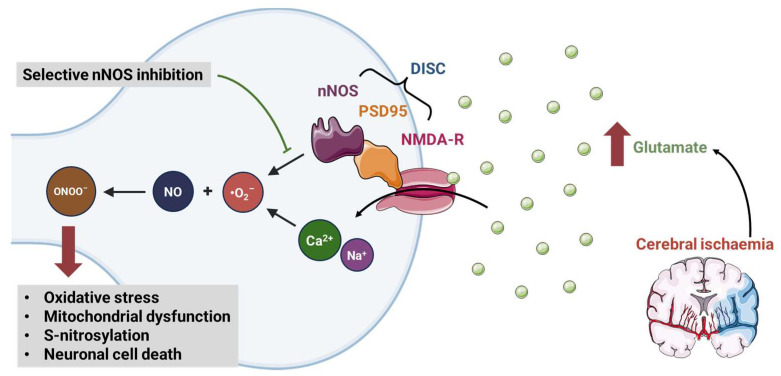Figure 2.
Mechanism of nNOS inhibition in post-stroke glutamate excitotoxicity: Cerebral ischaemia leads to an increase in release of the excitatory neurotransmitter glutamate. Glutamate activates the N-methyl-D-aspartate receptor (NMDA-R), with subsequent influx of calcium (Ca2+) (and sodium, Na+). Excess Ca2+ within the neuron contributes to the generation of superoxide (•O2−), which reacts with nitric oxide (NO) to generate peroxynitrite (ONOO−). Furthermore, neuronal nitric oxide synthase (nNOS) is bound to the NMDA-R by the postsynaptic density protein 95 (PSD95), forming a death-inducing signalling complex (DISC). This cascade leads to neuronal cell death via a number of mechanisms, including increased oxidative stress, mitochondrial dysfunction, and S-nitrosylation. Selective nNOS inhibition may provide a mechanism to interrupt this detrimental signalling cascade. Figure was partly generated using Servier Medical Art, provided by Servier, licensed under a Creative Commons Attribution 3.0 unported license.

